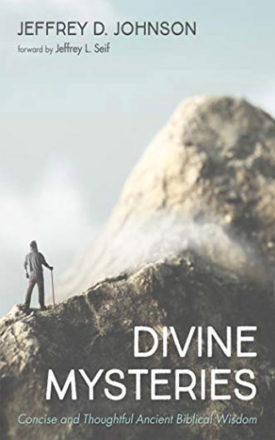Israel Today Resources:
-
 Hope Rising, Messianic Promise
Recommended donation: $20.00
Hope Rising, Messianic Promise
Recommended donation: $20.00
Add to cart
-
 Song of Song: The Greatest Lover
Recommended donation: $18.00
Song of Song: The Greatest Lover
Recommended donation: $18.00
Add to cart
-
 Divine Mysteries
Recommended donation: $15.00
Divine Mysteries
Recommended donation: $15.00
Add to cart
-

A Debt to the Synagogue
The church owes a debt to the synagogue in many areas:
The church is a debtor to the Synagogue for the idea of “canon,” the concept of sacred authoritative Scripture to rule and guide in all areas of one’s life. In the early synagogue the Scripture was employed in four ways each of which has its counterpart in Christianity.
A. It was read (seder, haftorah)
B. It was expounded (preached, homilies, Midrash)
Jesus “taught them as one having authority, and not as the scribes.” Matthew 7:29
C. Translated and paraphrased in the common language (Targums)
In Nehemiah 8 when Ezra reads the Law, the people stand out of respect and awe. In that state of reverence they worship God, the God of the Bible. While the people stood in reverence, there were men who translated and paraphrased for the people to “help them understand the reading.” They had just returned from 70 years of captivity in Babylon, and many did not understand Hebrew. Therefore, you have the necessity of translators. The people wept when they heard the words of the Law…
D. Scripture was also used in traditional prayers or liturgy.
E. Emphasis on study and interpreting Scripture was derived from the synagogue.
F. The concept of how to worship came from the synagogue.
G. The idea of the Altar came from Jewish roots.
H. Pulpit (Hebrew: Bemah, Almemar)
I. Titles of church offices
1. President (Hebrew: Nasi) or the Pastor, Shepherd, Elder, Bishop (rabbi or teacher); the main leader; administrators of the synagogue. Justin Martyr makes reference of this office in 150 AD. Three would form a tribunal to judge cases concerning various issues within the community of believers.The Presidents were also known as the “rulers of the synagogue.”Jesus mentioned them in Mark 5:3 & Luke 8:41. Paul spoke of their existence in the Gentile Corinthian church in 1 Corinthians 6:1,2.
2. Chazen (general minister, cantor) who prayed and chose seven people to read from the scriptures each week. He had general oversight of the reading of the Word and congregational responsibilities as well as leading in the worship and singing
3. Almoners or parnasin (scholars of the Scriptures therefore teachers, cared for the poor and distributed monies, foodstuff, clothing etc., they were the providers or supporters of the congregation. These came to be known as the deacons.
J. The vocabulary of prayer (Amen, Hallelujah) came from the synagogue.
K. Baptism (mikveh, ritual bathing) or “self” immersion came from the synagogue.
L. Communion, or Lord’s Supper (Passover meal which commemorated redemption) came from the Jewish tradition.
*For the complete text of Dr. Jeff’s booklet email your request to itmdrjeff@gmail.com for Jewish Roots: 101.
Shalom and Blessings,
Until He comes, we are
Together Under His Wings,
Dr. Jeff
Time is short, Life is precious, and Jesus is coming soon!


